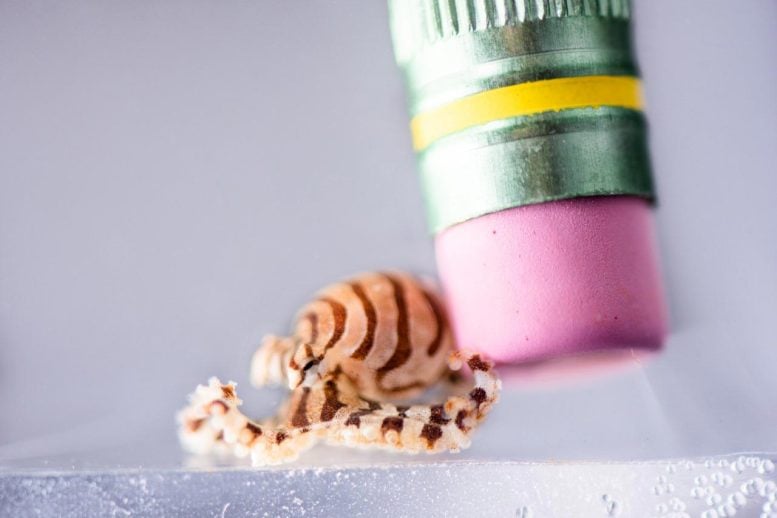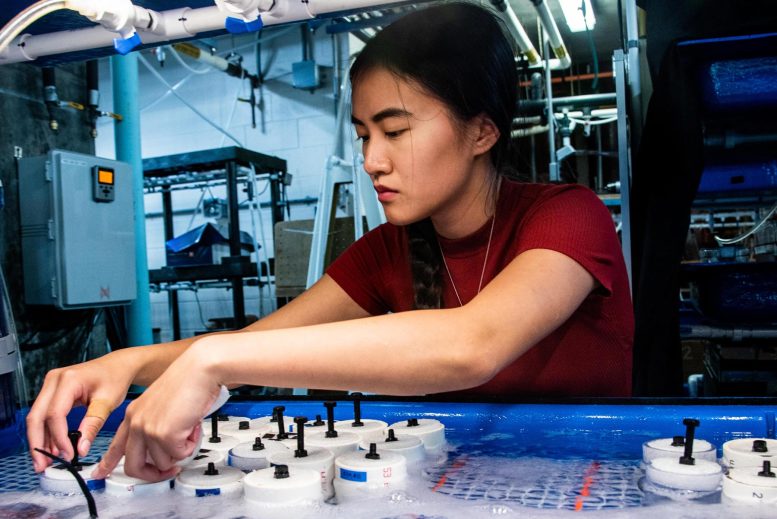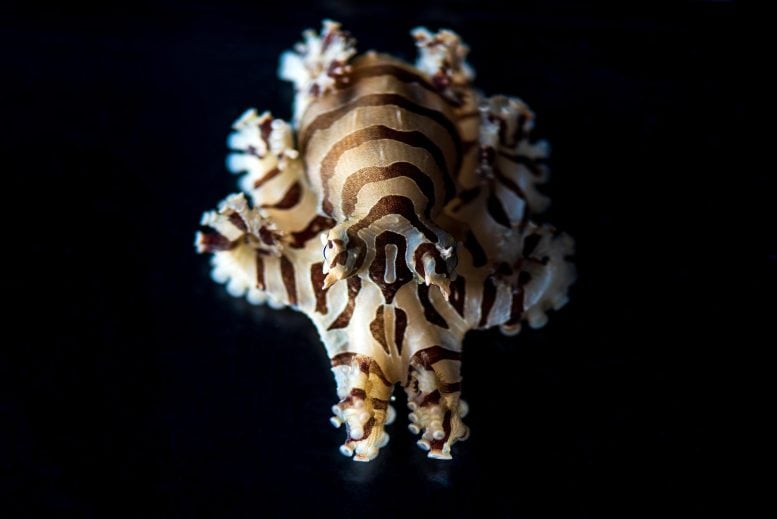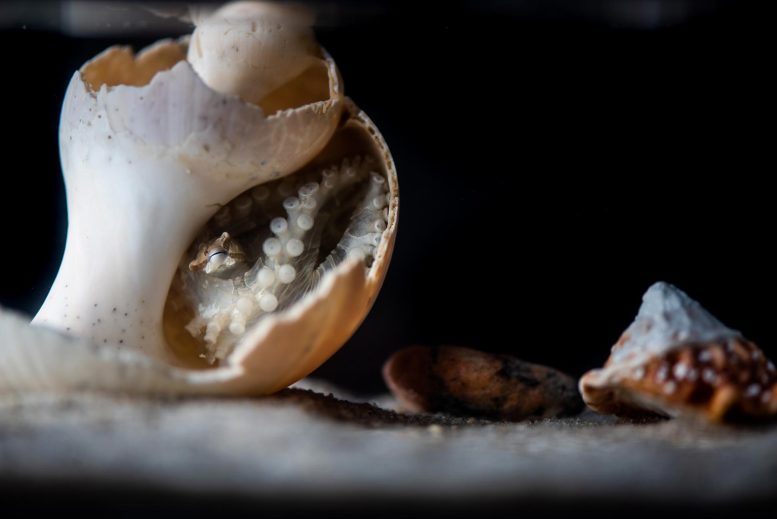Scientists Succeed in Culturing the Pygmy Zebra Octopus – The Size of a Grain of Rice When They Hatch

A pygmy zebra octopus hatchling in the Cephalopod Mariculture Lab at the Marine Biological Laboratory, Woods Hole. These octopuses are about the size of a grain of rice when they hatch. They reach full size (about the size of a table grape) within six months. Credit: Tim Briggs
For generations, scientists have relied on a handful of organisms to study the fundamentals of biology. The usual suspects—fruit flies, zebrafish, and mice, among others—all have short lifespans, small body size, can be bred through multiple generations in the laboratory, and have been developed for genetic investigations. These research organisms leave out a whole swath of biological diversity and scientists have lacked access to a cultured octopus laboratory organism—until now. Introducing the pygmy zebra octopus (O. chierchiae).
In a new paper published in the journal Frontiers in Marine Science, researchers from the Marine Biological Laboratory (MBL) introduce scientists to successful culturing methods for O. chierchiae that were developed at the MBL.
“The pygmy zebra octopus has certain biological features that make them attractive and more appropriate for laboratory research, compared to other octopuses,” says Bret Grasse, MBL’s manager of Cephalopod Operations and co-author on the paper.
Also known as the “lesser Pacific striped octopus,” the pygmy zebra octopus shares many useful similarities with other research organisms—such as small adult body size—but it also has unique features that distinguish it from other cephalopods (the group of animals that include octopus, squid, and cuttlefish).
“The majority of octopuses are ‘live fast, die young.’ They breed once and then immediately start to senesce and age and then die relatively quickly,” says Anik Grearson, former MBL intern and co-lead author on the paper. Unlike other octopus species, a female O. chierchiae lays several clutches of 30-90 eggs over her reproductive period.

Anik Grearson, co-lead author on the paper, leans over a tank in the Cephalopod Mariculture Lab at the Marine Biological Laboratory, Woods Hole. Credit: Marine Biological Laboratory
“We can mate them and know exactly when they’ll lay their eggs. We know exactly how long they’ll incubate and we can raise offspring at a relatively high survivorship rate compared to other octopuses,” says Grasse. Add that to its small size, sexual dimorphism, and predictable breeding schedule and it’s easy to see why O. chierchiae is an ideal candidate for further exploration and research.
Reference: “The Lesser Pacific Striped Octopus, Octopus chierchiae: An Emerging Laboratory Model” by Anik G. Grearson, Alison Dugan, Taylor Sakmar, Dominic M. Sivitilli, David H. Gire, Roy L. Caldwell, Cristopher M. Niell, Gül Dölen, Z. Yan Wang and Bret Grasse, 13 December 2021, Frontiers in Marine Science.
DOI: 10.3389/fmars.2021.753483


No comments:
Post a Comment